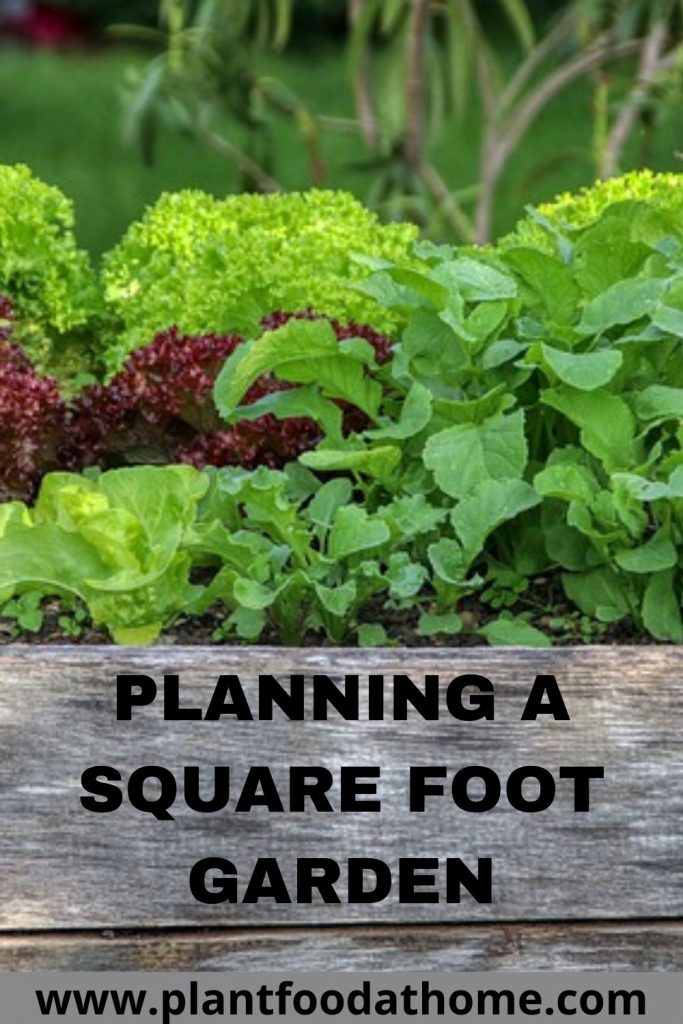Planning a square foot garden can be great for vegetable gardening in smaller spaces. And if you are new to gardening, then square foot gardening is an easy and ordered method of gardening that is perfect for learning as you go. In this article, we’ll look at what exactly is a square foot garden. And how can you go about creating a square foot garden plan for abundant vegetables to feed you and your family.
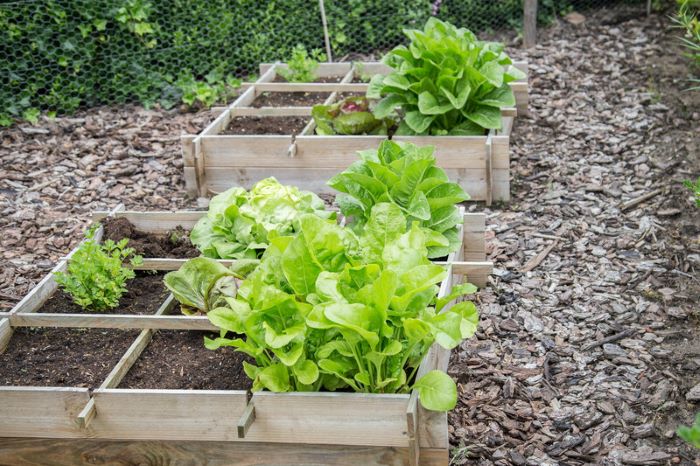
Table of Contents
- What is Square Foot Gardening?
- What Are The Benefits of Square Foot Gardening
- How Big Should a Square Foot Garden Growing Area Be?
- Where Should You Position Your Square Foot Garden?
- Garden Bed Edging for a Square Foot Garden
- Growing Medium for a Square Foot Garden
- Choosing Crops For a Square Foot Garden
- Plant Spacing Guidelines
- Companion Planting
- Maintaining a Square Foot Garden Over Time
- Conclusion
- Recommended Products
What is Square Foot Gardening?
Square foot gardening is a term originally coined by author Mel Batholomew in 1981 to describe a method of intensive food gardening in raised beds. His square foot gardening plan showed how more food could be grown in less space, making it a popular option for backyard food growers and urban homesteaders alike.
In each of these squares, a different crop is planted. The beauty of this system is the ordered number of plants that can be grown in each square. Traditionally, the number of plants per square is given in qualities of 1, 2, 4, 9 or 16. For example, 16 carrots can be planted in one square foot because they are a small, skinny crop. And because celery grows much larger, planting a maximum of 2 per square foot is recommended.
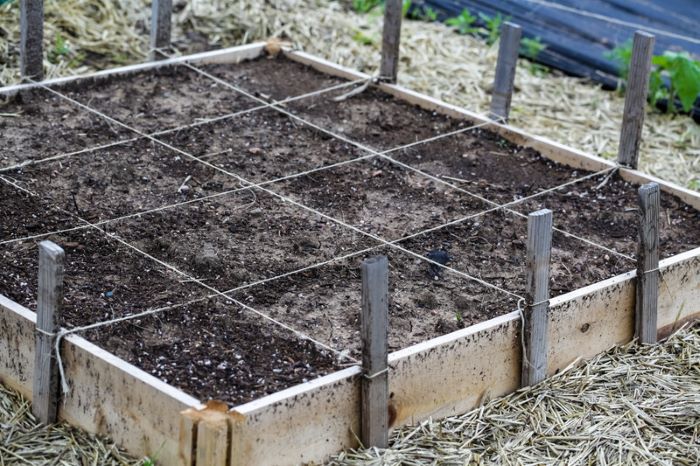
So the number of vegetables per square foot is dependent on the size the plant grows to at maturity.
Today, square foot gardening is often used to describe any growing method that uses square foot measurements to determine the layout and plant spacing.
What Are The Benefits of Square Foot Gardening
Square foot gardening can produce high yields in a small space. This is probably the biggest appeal of square foot gardening.
The intensive planting of square foot gardening also helps to avoid bare soil, which suppresses weeds and protects the soil from drying out.
Square foot gardening champions different crops in the same bed rather than planting just one type of crop per bed. This promotes strong plant resilience, and can help in the function and management of an organic garden.
The ordered system of square foot gardening makes it easy to set up, even for complete beginners. And being a simple method of gardening, it also makes it easy to make garden plans each season and to keep track of what you have growing.
Gardening in small raised beds means they are easier to cover in winter to protect from frost, or shade from heat in the summer as well as to cage from pests.
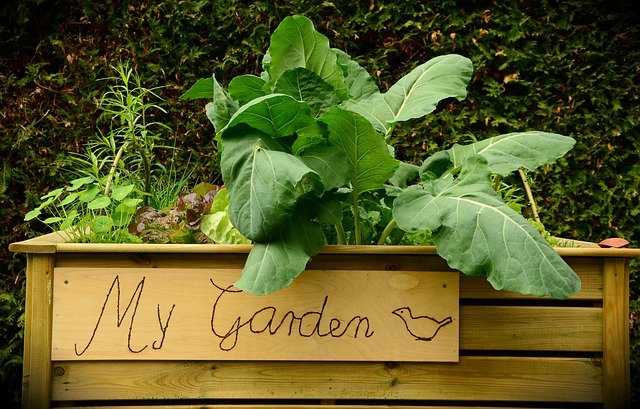
How Big Should a Square Foot Garden Growing Area Be?
Originally square foot gardening involved creating small square beds 4 feet x 4 feet (1.2m) in size.
Square foot gardening often begins with a raised garden bed. Originally the beds measured 4ft by 4ft (1.2m) so that beds could be divided into sixteen squares, with each square measuring 1 square foot.
However, a square foot garden can be created in any size, as long as the raised bed is a full number of feet long and a full number of feet wide.
It is best to keep beds no more than 4 feet wide so that you can easily reach across them without stepping on or compacting them. But you could create beds that are 8, 12, 16 foot long, or even longer.
You can also plant roughly according to a square foot plan even in beds that are not square or rectangular.
Where Should You Position Your Square Foot Garden?
Ideally, position your square foot garden where it will be relatively sheltered, with as much sunlight as possible.
However, if you live in a warmer, drier climate zone, some shade may be a good idea. Think about the requirements of the crops you would like to grow in each bed.
Think also about garden pathways, and the proximity of the growing area to your kitchen, water supply/ rainwater harvesting system and compost bin.
Garden Bed Edging for a Square Foot Garden
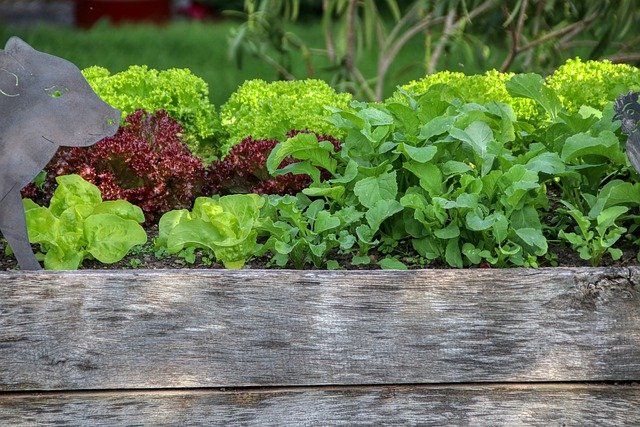
Once you have decided where to place your bed, planning a square foot garden begins with choosing bed edging. While simple wooden frames are typical such as cedar, there is a range of natural and reclaimed materials you could choose.
Some ideas include reclaimed wood, old pallets, bricks or other natural materials such as stones.
Or you can purchase a raised garden bed from your local nursery, department store or online such as these two options:
Related Reading: The Best Raised Garden Beds – Reviewed
Growing Medium for a Square Foot Garden
Since you will be planting intensively in a square foot garden, the growing medium you choose for your raised beds is very important.
One of the negatives to come out of Batholomew’s square foot gardening method is the original recommended growing medium. In particular the use of peat moss which is not a good sustainable choice. But you can easily use other growing mediums that are better for people and planet.
One excellent idea is to fill your raised beds using a common method from ‘no-dig’ gardening – the ‘lasagna bed’ method. This involves filling the beds with layers of carbon-rich and nitrogen-rich organic materials before topping them with homemade compost or good-quality soil.
Related: Soil Calculator For Raised Bed Gardens
How To Fill a Raised Garden Bed – Lasagna Method
An example of filling a raised garden bed quickly using the lasagna method starts with a thick layer of cardboard – this will help smoother any weeds from growing under the bed. Then add small sticks or branches you have around the yard. This is only a guide and you can use what you have, as long as it can decompose over time. I’ve used small pieces of wood from broken animal cages! But you don’t have to use the wood if you don’t have access to any, just move on to the next step.
Then alternate between layers of nitrogen and carbon materials.
Nitrogen materials are the moist and often fresh materials and they include vegetable scraps, fresh grass clippings, seaweed, coffee grounds and manure.
Carbon materials are dry and often brown in color and they include cardboard, paper, wood chips/shavings and bark, straw and dry fall leaves.
Finally, top with 1-3 inches of compost or quality soil.
During the growing season, the soil level will shrink as it all composts and decomposes. Simply top the garden bed up with more layers between growing seasons.
This method creates and builds healthy soil that is alive with nutrients. And healthy soil feeds your plants, keeping them healthy and happy!
If you are growing on a solid surface, the raised garden bed soil level should be at least 12 inches deep to accommodate plants deeper roots. For raised garden beds positioned on lawn or soil, 6 inches of soil works well.
Choosing Crops For a Square Foot Garden
When choosing crops for a square foot garden plan, keep your location in mind. Consider what grows well in your area. Many common annual crops can be grown in square foot gardening. Though particularly large and sprawling plants such as pumpkins are best grown elsewhere.
Plant Spacing Guidelines
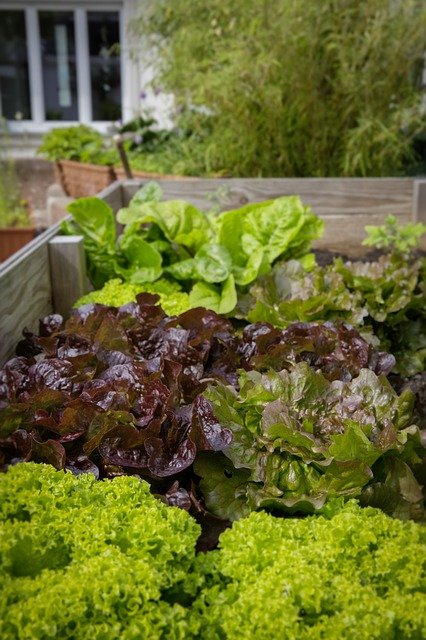
Below is a list of many vegetable crops commonly grown in square foot gardens, along with details of how many of each can be planted in 1 square foot:
| Plants Per Square Foot | 1 | 2 | 4 | 9 | 16 |
|---|---|---|---|---|---|
| Asian Leafy Greens | ✔ | ||||
| Beets | ✔ | ||||
| Beans (Bush) | ✔ | ||||
| Beans (Pole) | ✔ 4-8 on trellis | ||||
| Broccoli | ✔ | ||||
| Brussels Sprouts | ✔ | ||||
| Cabbage | ✔ | ||||
| Carrots | ✔ | ||||
| Cauliflower | ✔ | ||||
| Celeriac | ✔ | ||||
| Celery | ✔ | ||||
| Corn | ✔ | ||||
| Cucumber | ✔ on trellis | ||||
| Eggplant | ✔ | ||||
| Fennel | ✔ | ||||
| Garlic | ✔ | ||||
| Kale | ✔ | ✔ depends on variety | |||
| Kohlrabi | ✔ | ||||
| Leeks | ✔ | ||||
| Lettuce (leaf) | ✔ | ||||
| Lettuce (head) | ✔ | ||||
| Onion (bulbing) | ✔ | ||||
| Parsnip | ✔ | ||||
| Peas | ✔ 4-8 on trellis | ||||
| Peppers | ✔ | ✔ depends on variety | |||
| Potatoes | ✔ | ✔ depends on variety | |||
| Radishes | ✔ | ||||
| Shallots | ✔ | ||||
| Spinach | ✔ | ||||
| Spring Onion | ✔ | ||||
| Squash | ✔ some varieties need a lot more room | ||||
| Sweet potato | ✔ | ||||
| Swiss Chard | ✔ | ||||
| Tomatoes | ✔ | ||||
| Turnips | ✔rutabaga | ✔ smaller turnips | |||
| Zucchini | ✔ over 2 squares |
The next chart below is a list of commonly grown herbs in square foot gardens, also with details of how many of each can be planted in 1 square foot:
| Plants Per Square Foot | 1 | 2 | 4 | 9 | 16 |
|---|---|---|---|---|---|
| Basil | ✔ | ✔ | |||
| Chives | ✔ | ||||
| Cilantro | ✔ | ||||
| Dill | ✔ | ||||
| Oregano | ✔ | ||||
| Parsley | ✔ | ||||
| Rosemary | ✔ | ||||
| Sage | ✔ | ||||
| Tarragon | ✔ | ||||
| Thyme | ✔ |
Note that mint has been left out of the table on purpose as it is not suitable for growing in garden beds due to its invasive nature and tendency to take over the growing space. Instead, plant a pot of mint and place it next to your garden bed instead.
Companion Planting
In organic gardening, it’s a good idea to think about companion planting. Think about plants that grow well in similar conditions, and also plants that can aid their companions in different ways. For example, plating tomatoes and basil together are a classic example of companion planting.
It is also beneficial to plant a few flowers in your square foot garden, such as marigolds or nasturtium (both of which are also edible). Flowers will help bring in pollinators to your square foot garden and increase your yields. Not to mention they look very pretty too!
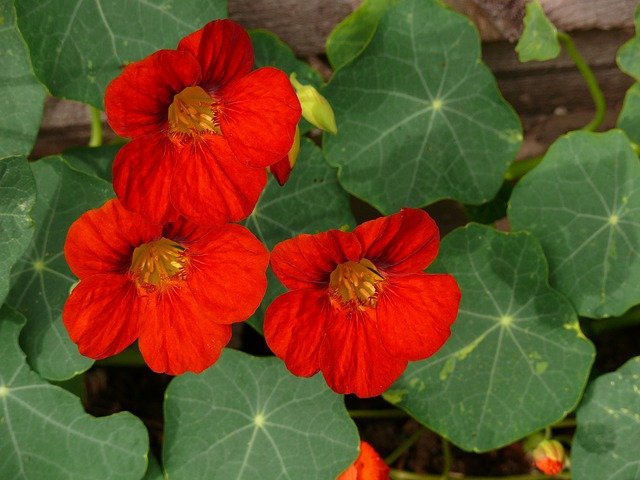
You can easily add any number of your favorite herbs or small fruiting berries such as strawberries.
Incorporating these ideas with square foot gardening will help achieve the best results in your organic garden.
Maintaining a Square Foot Garden Over Time
When creating a square foot garden layout it’s important to think about how to maintain health and fertility over time. Between growing seasons, the soil may need topping up. You do this with the addition of homemade compost. Adding organic mulches will help protect the soil and using organic fertilizers will feed the soil and plants.
And you should also think about crop rotation. Certain crops should not be grown in the same location year after year, for example, tomatoes and eggplants. And rotating legumes (peas and beans) can help maintain important levels of nitrogen in the soil.
Keep these basics in mind and you will find it easy to keep your square foot garden healthy and productive through the many growing seasons of garden-fresh vegetables.
Conclusion
Square foot gardening is a great method of growing more food in smaller growing spaces. So if want to start a vegetable garden or grow more food, square foot gardening provides a framework to get you growing. And if you’ve started your square food garden, I’d love to hear your experience in the comments below.
Recommended Products
Further Reading:
- Natural and Organic Vegetable Garden Weed Control Methods
- Milk Spray For Powdery Mildew (Natural Fungicide for Plants)
- Why Does Mulch Smell Bad? (And How to Fix It)
- Why Is My Raised Bed Growing Mushrooms? What You Need To Know
- Stop Struggling with Deformed Parsnips: 8 Causes & Solutions
